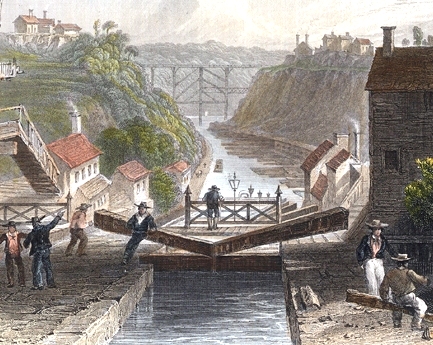

Australia’s Macquarie, along with Spain’s Cintra, was the global pioneer of large-scale private-public partnerships (PPPs) in transportation infrastructure. American states and cities, faced with huge capital crunches and prodded by the feds to be more creative, are interested in doing more PPPs here. So when The Australian proclaims the PPP model as a domestic failure, we should listen.
The Australian analyzes one marquee PPP, a 45-year deal to build and run an airport connection toll road originally spearhead by a partnership that included Macquarie. The paper notes that “It’s hard to imagine the retail investors … will be willing or able to stump up the next instalment, even with threats of legal option. This leaves some form of a government bailout, or a buyout by institutional investors, a more likely option.
That deal, BrisConnections, “is the latest in a number of private sector-funded tolls that have flopped,” the paper continues. It mentions four others, “Lane Cove Tunnel, Sydney’s Cross City Tunnel, RiverCity and ConnectEast,” as all “having failed to meet expectations, leaving their stakeholders in the red.”
But the devastating part is here:
The brutal reality is that most private sector toll operators are a shambles. Most have overinflated their traffic forecasts, financed them with a slice of equity from the public markets, then geared up, and paid investors back their own capital in distributions (which enticed them into the float in the first place). As the debt markets worsen and most listed infrastructure funds have fallen apart, a new model is needed to help finance the estimated $800 billion the country needs to spend on infrastructure in the next decade. … The upshot is the Government is going to have to meet the private sector halfway if it is to fund the growing list of infrastructure projects. … The private sector is calling on governments to take more of the risk to entice the badly burned investors back into the fray.
The paper goes on to detail ways in which the private sector is dialing back its willingness to take on risks, from traffic-volume risk to financial-underwriting risk. It concludes that, “until a proper funding model can be sorted out that is palatable to governments and the private sector, projects … will remain pipe dreams.”
As Australia comes to terms with the idea that PPPs aren’t a magical solution to infrastructure problems, countries like the UK are coming to the same conclusion. The government there, for example, wants to restructure its contracts with the private-sector company that operates Heathrow and two other airports, citing poor performance due to a lack of competition.
As this blog has said before, the private sector can have a role in taking some discrete risks on infrastructure projects in the U.S.
But the idea that the government off its responsibility for public infrastructure — financial and otherwise — is also a pipe dream.
And the few deals done stateside at the height of the credit bubble — including the Indiana Toll Road deal — are more likely to be seen, in hindsight, as symbols of an age of excess and free money rather than as symbols of a future, sustainable PPP model.
You may also like

NY’s leaky gas taxes

Thruway toll credit crashes

Cuomo’s magical mystery cash

Power for tolls?

Gone with the windfall

A tangled broadband proposal

Cuomo’s fungible windfall

There goes the windfall?
NY’s leaky gas taxes
- August 29, 2018
Thruway toll credit crashes
- March 16, 2016
Cuomo’s magical mystery cash
- January 14, 2016
Power for tolls?
- January 13, 2016
Gone with the windfall
- March 31, 2015
A tangled broadband proposal
- March 4, 2015
Cuomo’s fungible windfall
- March 2, 2015
There goes the windfall?
- January 22, 2015
